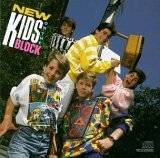
This week: 9-to-5 Web 2.0, Google Maps is where it’s at, Caught between two
worlds, Web 2.0 spreading its wings, New apps on the block.
Web 2.0 in the 9-5 World
I found a couple of posts this week about using Web 2.0 technologies in the workplace
– a worthy topic.
In the first, Peter
Yared pointed out a disconnect between Web 2.0 in “the home” and how it’s panning out
“at work”. Peter concluded:
“As more and more Web 2.0 applications deploy, pretty soon even the CEO will be saying
“some random guy can get Google to work with Craigslist, and we can’t get CRM to work
with ERP?” Web 2.0 = SOA, and an enterprise’s customers, employees and partners are going
to expect it to happen ASAP.”
In my experience a lot of internal corporate apps are desktop apps, rather than web
apps. This is mainly because of the enhanced functionality developers can achieve with
desktop apps. However, like Peter, I see no reason why organisations shouldn’t start to
take advantage of the interconnectivity and data reuse that web apps achieve via Web
Standards and Web APIs. It’s so much easier to get apps working together if they’re all
on the Web platform.
Also on the ‘Web 2.0 in the workplace’ theme, Marshall Kirkpatrick explained how he hooked up one of his customers with “persistent searches”.
Marshall set them up with a variety of topic-based RSS feeds and gave them a Furl account “so they can save and comment on the articles
they find via the RSS feeds.” This is an excellent way to introduce business people to
the world of RSS and Web 2.0. Related to that, I wrote a post earlier this year which
described how to set up
topic-based RSS feeds.
Google Maps is Where It’s At
Google Maps is everywhere. It’s one of the
hottest Web 2.0 apps around right now, alongside Flickr and del.icio.us.
I don’t claim to be an expert on Google Maps, but I feel I need to highlight it in my Web
2.0 Weekly Wrap-Up because of its popularity. Perhaps the reason it’s so cool is because
it’s an ideal way for developers to show off their Web 2.0 chops. As Sanborn GIS and Mapping developer
Dave Bouwman wrote:
“It’s [Google Maps] a very “cool” implemention of Web 2.0 / AJAX technology. This is
perhaps the most important factor re: the hacks. Many developers want to start working
with AJAX, and Google Maps is the hot new demo.”
Rather than attempt to summarise all the latest Google Maps trends, let me point you
to two much more authoritative sources: Joshua Porter’s post Google Maps Spawns Many
Web 2.0 Interfaces and O’Reilly Radar’s Google Maps Hacks
at the Factory Tour and Google Maps and BBC
Backstage.
To Web 2.0, or not to Web 2.0 – that is the question
Reader Seni Sangrujee emailed me this week with this dilemma:
“I’m currently building a web app to help people get together easier (collaborative
calendar, decentralized event planning instead of host-driven) It’s still in beta, but
half of my beta testers want this app to go in a more Web 2.0 direction with full
read/write wiki-like editability, APIs to integrate with their blogs, iCal
interoperability, etc. The other half wants a different approach.
Here’s a sample event to convey the concept and what I’m talking about: http://gefilter.com/7wEB3W
Unfortunately, I’m currently taking a hybrid Web 1.5 approach to try to accomodate
everyone 🙁 Event Initiators are given the option on how open they want things to
be.”
Seni’s app is for event management and is called Gefilter Fish. He writes more about
the
Web 1.0 vs Web 2.0 question here. Who can help Seni out?
Web 2.0 spreads its wings
I’ve noticed an upsurge in blog posts and indeed whole websites about Web 2.0
recently. Will Pate has set up a community blog entitled What’s Web 2.0 – and he gave me kudos
for “carrying the Web 2.0 torch” over the past year (thanks Will!). Also I noticed Keith Robinson’s post
about Web 2.0, which introduced the concept to all his Web Design readers.
This increasing coverage will get a wider variety of people drinking the Web 2.0
kool-aid. That’s got to be good, if only because it’ll drive eyeballs to my blog [that’s
a Web 2.0 joke – get it? :-)]
p.s. I’m thinking about changing my tagline to “The Father of Web 2.0”, or perhaps
“Web 2.0 El Papa” because of its literary connotations 😉 [ed: note to new readers,
Richard has kind of a strange sense of humour… you’ll get used to it]
New apps on the block
In lieu of the Techie Post of the Week, I thought
I’d highlight some newbie Web 2.0 apps with ‘Oh,
oh, oh, oh, oh / The right stuff’:
YubNub: a command line for the Web OS – Jon Aquino’s
Ruby on Rails app that lets you access any number of web apps from one screen
FeedLounge: new web-based RSS Aggregator –
AJAX-driven newsreader that promises desktop app-like functionality and trendy things
such as tagging.

Literary Machine – “The
Literary Machine is a dynamic archive and an idea management tool aimed at creative
thinking — built especially with the writer in mind.”
ConnectViaBooks – seems to be a social
networking tool revolving around books. (via)
Rojolicious – “closing the loop between Rojo and del.icio.us”
That’s a wrap for another week!










